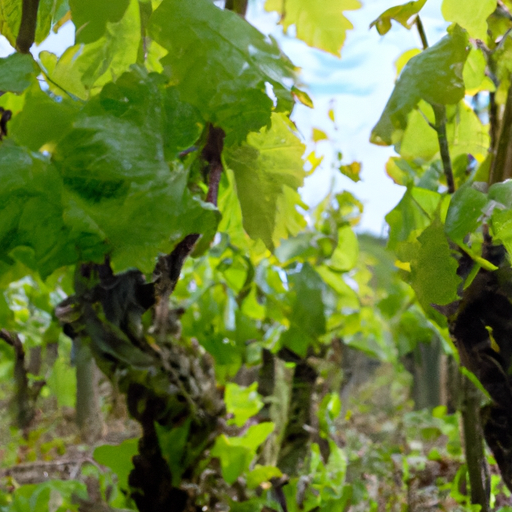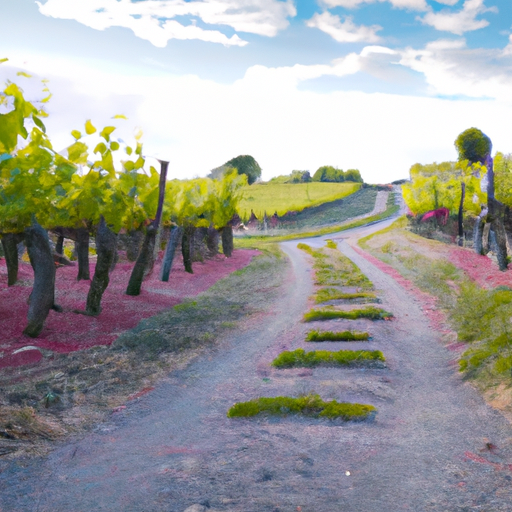
The History and Terroir of Bordeaux’s Finest Wines
The history and terroir of Bordeaux’s finest wines are deeply intertwined, creating a legacy that has stood the test of time. Bordeaux, located in southwestern France, has a rich winemaking tradition that dates back centuries. Its unique combination of climate, soil, and grape varieties has made it one of the most renowned wine regions in the world.
The story of Bordeaux’s winemaking heritage can be traced back to the Roman era, when the region was first cultivated for vineyards. Over the centuries, the region’s winemaking techniques evolved and improved, with the influence of various cultures and civilizations. The Dutch, for example, introduced drainage systems that helped improve the quality of the soil, while the British played a significant role in promoting Bordeaux wines internationally.
One of the key factors that contribute to the exceptional quality of Bordeaux wines is the region’s terroir. Terroir refers to the unique combination of soil, climate, and topography that gives wines their distinct characteristics. Bordeaux’s terroir is incredibly diverse, with a variety of soil types, including gravel, clay, and limestone. This diversity allows for the cultivation of different grape varieties, each expressing its own unique flavors and aromas.
The region’s climate is also crucial in shaping the character of Bordeaux wines. Bordeaux experiences a maritime climate, with mild winters and warm summers. The proximity to the Atlantic Ocean moderates the temperature, preventing extreme heat or cold. This climate is particularly favorable for the ripening of grapes, allowing them to develop a perfect balance of sugar, acidity, and tannins.
Bordeaux is known for its traditional grape varieties, which are classified into two main categories: red and white. The red wines of Bordeaux are primarily made from Cabernet Sauvignon, Merlot, and Cabernet Franc grapes. Each grape variety contributes its own unique characteristics to the final blend. Cabernet Sauvignon adds structure and tannins, Merlot brings softness and fruitiness, while Cabernet Franc adds complexity and aromatic qualities.
On the other hand, the white wines of Bordeaux are predominantly made from Sauvignon Blanc, Sémillon, and Muscadelle grapes. Sauvignon Blanc provides freshness and acidity, Sémillon adds body and richness, while Muscadelle contributes floral and aromatic notes. These grape varieties are often blended together to create complex and well-balanced white wines.
The classification system of Bordeaux wines is another aspect that adds to their prestige. In 1855, Emperor Napoleon III requested a classification of Bordeaux wines for the Exposition Universelle de Paris. The result was the Bordeaux Wine Official Classification of 1855, which ranked the region’s top châteaux into five different growths or crus. This classification has remained largely unchanged for over a century and is still considered a benchmark for Bordeaux wines.
In conclusion, the history and terroir of Bordeaux’s finest wines have shaped the region’s winemaking legacy. From its Roman origins to the present day, Bordeaux has consistently produced exceptional wines that showcase the unique characteristics of its terroir. The combination of diverse soils, a favorable climate, and traditional grape varieties has made Bordeaux a symbol of excellence in the world of wine. Whether it’s a bold red or an elegant white, Bordeaux wines continue to captivate wine enthusiasts with their complexity, balance, and timeless appeal.
Exploring the Iconic Grape Varieties of Burgundy

Burgundy, a region in eastern France, is renowned for its exceptional wines. The region’s unique terroir, combined with centuries of winemaking expertise, has resulted in the production of some of the world’s most sought-after wines. One of the key factors contributing to Burgundy’s success is its focus on specific grape varieties, each with its own distinct characteristics and flavors.
Pinot Noir, the red grape variety synonymous with Burgundy, is the star of the show. Known for its elegance and finesse, Pinot Noir thrives in Burgundy’s cool climate and limestone-rich soils. The grape produces wines that are light to medium-bodied, with delicate aromas of red fruits, earth, and spices. Burgundy’s Pinot Noir wines are often described as ethereal, with a silky texture and a long, lingering finish.
Chardonnay, the white grape variety of Burgundy, is equally as important. It is responsible for producing some of the world’s finest white wines. Chardonnay from Burgundy is known for its complexity and ability to express the nuances of its terroir. The wines range from crisp and mineral-driven to rich and buttery, depending on the specific vineyard and winemaking techniques employed. Burgundy’s Chardonnay wines often exhibit flavors of citrus, apple, and stone fruits, with a touch of oak adding depth and complexity.
Another grape variety that deserves recognition is Gamay. While not as famous as Pinot Noir or Chardonnay, Gamay plays a significant role in Burgundy’s winemaking tradition. Gamay produces wines that are light, fruity, and refreshing, with flavors of red berries and a hint of spice. These wines are often enjoyed young and are perfect for casual, everyday drinking.
Burgundy’s commitment to these grape varieties is evident in its strict appellation system. The region is divided into numerous appellations, each with its own set of rules and regulations governing grape varieties, yields, and winemaking practices. This system ensures that the wines produced in Burgundy are of the highest quality and truly reflect the unique characteristics of their respective terroirs.
Exploring the vineyards of Burgundy is a journey through history and tradition. The region is home to countless small, family-owned wineries, where winemakers meticulously tend to their vines and craft wines with passion and dedication. Visiting these wineries offers a glimpse into the artistry and craftsmanship that goes into producing Burgundy’s finest wines.
In conclusion, Burgundy’s iconic grape varieties, Pinot Noir, Chardonnay, and Gamay, are the backbone of the region’s winemaking tradition. These grapes, combined with Burgundy’s unique terroir and winemaking expertise, result in wines that are truly exceptional. Whether it’s the ethereal elegance of a Pinot Noir, the complexity of a Chardonnay, or the refreshing fruitiness of a Gamay, Burgundy’s wines are a testament to the region’s commitment to quality and tradition. Exploring the vineyards of Burgundy is a journey that every wine lover should embark on, as it offers a unique opportunity to taste and appreciate some of the world’s finest wines.
Unveiling the Secrets of Bordeaux and Burgundy’s Premier Cru Classé Wines
The world of wine is vast and diverse, with countless regions producing their own unique and exceptional bottles. However, when it comes to the crème de la crème of wine, Bordeaux and Burgundy are undoubtedly at the top of the list. These two regions in France have long been revered for their premier cru classé wines, which are considered the pinnacle of winemaking excellence.
Bordeaux, located in the southwest of France, is renowned for its red wines, particularly those made from Cabernet Sauvignon and Merlot grapes. The region’s unique terroir, which includes a combination of gravel, clay, and limestone soils, contributes to the distinct character of Bordeaux wines. The classification system in Bordeaux is based on the concept of cru classé, which ranks the wines based on their quality and reputation. The premier cru classé wines, also known as first growths, are the most prestigious and sought-after bottles in Bordeaux.
Among the premier cru classé wines of Bordeaux, five estates hold the highest distinction: Château Lafite Rothschild, Château Latour, Château Margaux, Château Haut-Brion, and Château Mouton Rothschild. These wines are known for their exceptional aging potential, often improving and developing complex flavors over several decades. They are characterized by their elegance, finesse, and balance, with each estate offering its own unique expression of Bordeaux’s terroir.
Moving eastward to Burgundy, we find another treasure trove of premier cru classé wines. Burgundy is famous for its Pinot Noir and Chardonnay grapes, which thrive in the region’s cool climate and limestone-rich soils. Unlike Bordeaux, Burgundy’s classification system is based on the concept of terroir, with vineyards classified as premier cru or grand cru based on their specific location and quality.
The premier cru classé wines of Burgundy are highly regarded for their purity, complexity, and finesse. Some of the most esteemed producers in the region include Domaine de la Romanée-Conti, Domaine Leroy, and Domaine Armand Rousseau. These wines are often described as ethereal, with delicate aromas, vibrant acidity, and a long, lingering finish. They are the epitome of elegance and are highly sought after by collectors and connoisseurs around the world.
While Bordeaux and Burgundy may differ in their classification systems and grape varieties, they share a common thread of excellence and craftsmanship. Both regions have a long history of winemaking, with centuries of knowledge and tradition passed down from generation to generation. The winemakers in Bordeaux and Burgundy are deeply connected to their land, meticulously tending to their vineyards and carefully crafting their wines to showcase the unique characteristics of their terroir.
In conclusion, Bordeaux and Burgundy’s premier cru classé wines represent the pinnacle of winemaking artistry. These exceptional bottles are the result of centuries of dedication, passion, and expertise. Whether you prefer the bold and structured reds of Bordeaux or the delicate and nuanced wines of Burgundy, exploring the world of premier cru classé wines is a journey that every wine lover should embark upon. So raise a glass and savor the secrets unveiled by Bordeaux and Burgundy’s finest.






